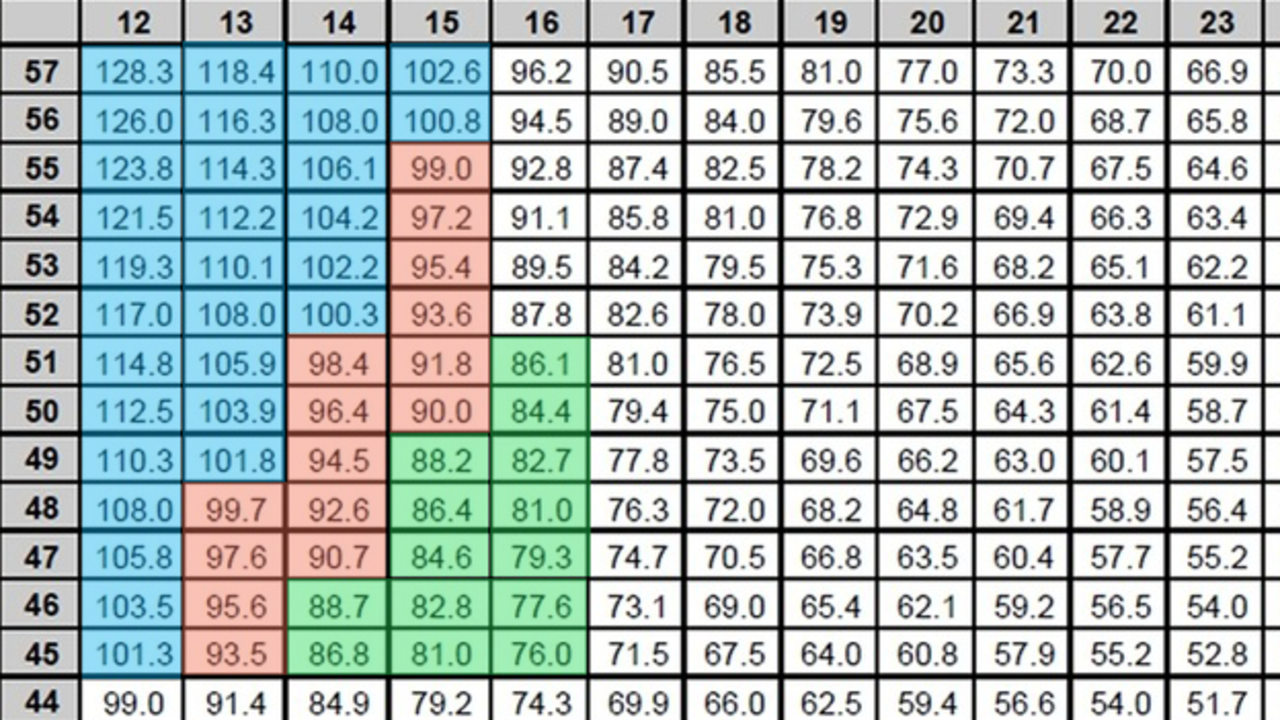Understanding Gear Ratios for Performance

Understanding gear ratios is something that is usually taught very early in the piece for a new track cyclist. Gearing plays a significant role in race and training performance and it’s every track cyclist’s goal to try and pick the optimum gear to match their physiology and pedalling ability across different types of races.
Too big a gear and you’ll struggle to get on top of it, too small a gear and you’ll find yourself spinning out or struggling to find more at the pointy end of races.
For endurance events, finding a gear that allows you to keep up with the race and accelerate in sprints (in a points race for instance) is important, and for short events - such as the sprint or flying 200m - selecting a gear that allows you to produce the maximum amount of average watts over the full 200m is essential. Utilising a number of gears from a gear chart that pertains to your bike set up (e.g. wheel circumference) and your strengths is the first step in securing the foundation for performance.
What’s the purpose of utilising a range of Gears?
Using a range of gears allows you to develop different areas of your physiology. For example: big gears can assist with strength development, small gears can develop neuromuscular coordination and speed.
The below gear chart is an example which is utilised by an Omnium Rider who contests a range of events and completes a number of different training activities.

What you’ll notice is that the rider has roughly shaded the gear chart to easily locate different gear ratio segments that are used across different training efforts and races.
*It’s important to note that gearing is individual, and the gear chart shading below represents what is considered ‘small’, ‘moderate’, and ‘larger’ gears for the specific rider in context.
“Smaller” gears have been shaded green and range from anywhere between 76 and 88 inches. You may be thinking that’s a big jump between gears to classify them all “small”, but what is important to note here is the fact that the rider will use a selection of different gears from the green shaded section to complete different types of efforts for different race events.
Here’s a few examples from the smaller gear group:
- 48 x 16 - Sprint day warm up gear - where smaller gears are used to allow the muscles time to properly warm up before increasing to bigger gears. As you move to bigger gears, you’ll utilise more intra-muscular strength and force (for example: a warm up activates the energy systems in the body, gradually moving through aerobic, to anaerobic, then finishing off with ATP).
- 46 x 16 - Neuromuscular speed work (short fast efforts) which are focused on training the brain and muscles to coordinate to produce force fast (i.e. attacking and accelerating quickly).
The group of larger gears (belonging to the blue shaded section) range from 100 through to 128 inches, and whilst the rider may not use every single gear combination from the section, different combinations - much like the previous example will be used to complete different styles of efforts and events.
For example:
A 100 inch gear combination may be used to achieve specific middle range cadences within training efforts to focus on targeted watt averages for set durations. Whereas a 115 inch gear might be used to complete seated accelerations to develop in the saddle strength on the bike.
So What about Race Gear Selection?
When it comes to choosing a race gear - it’s important to select a gear that gives you the ability to produce optimal and sustainable cadences for the event’s duration. You’ll also need to consider a gear that allows you to produce maximal watts for the length required. In some instances, this gear will allow you to attack, produce your best sprint result and then recover for repeat efforts within the event (for example - a points race).
So how do you know what the right gear is?
Here are a few basic tips to help you start thinking about the right gearing choices for you.
1. Do a max cadence test and work out what your maximum cadence is. This will give you a baseline and something that you can refer back to analyse improvements, particularly in efficiency.
2. Break down the event/discipline and work out which energy system you will mostly be utilising and what’s achievable in terms of an average cadence over the total time of the event.
3. For shorter, more sprint type events, run a few trials on different gear ratio’s to work out your maximum power output and drop off over 30 seconds.
4. If you’ve trialled gears in the past, analyse those gear ratio’s to work out what was more successful for you in terms of a) efficiency over time and b) power output over time
5. Make sure you’re completing both gym and bike exercises to improve your strength, power and speed – but more importantly, make sure you these exercises are specific to what you do on the bike, allowing you to transfer these attributes through to pedal stroke to produce more force, faster, over time with good technique!
6. Talk to us, or a coach who has the ability to weigh up your strengths and weaknesses as an athlete and prescribe gearing for both training and competition environments with the overall goal of helping you improve and progress in your chosen discipline/s.
If you have any questions or comments, please leave them in the box below.


